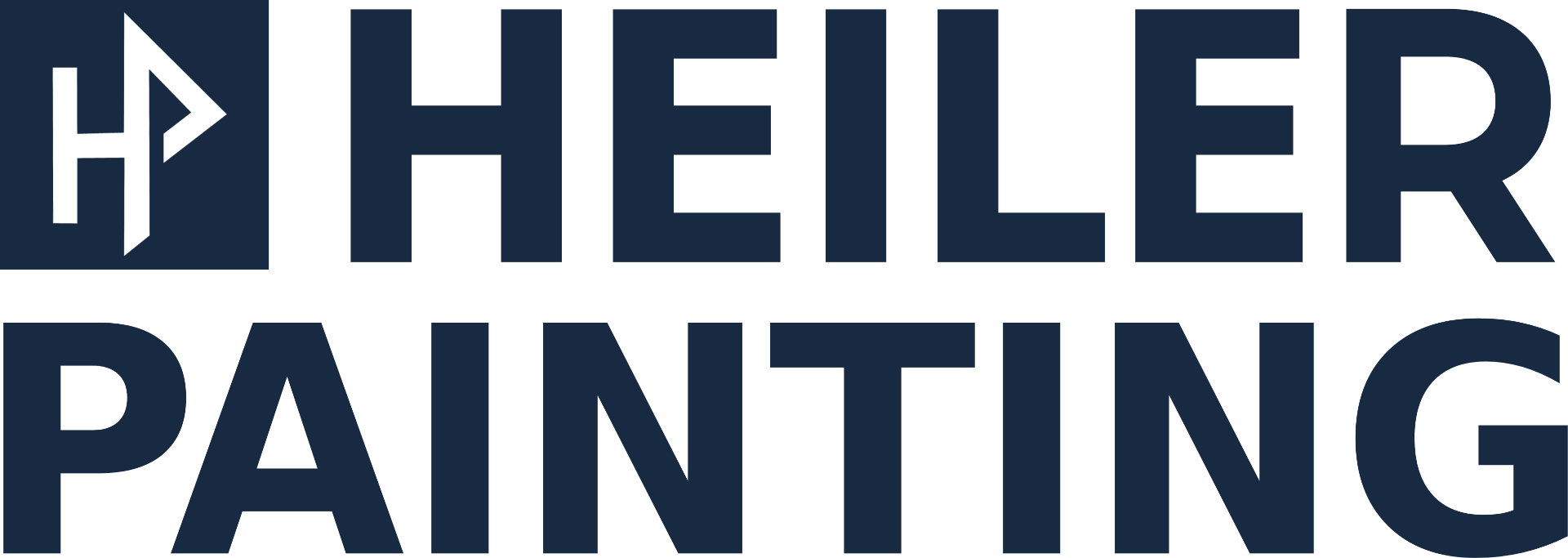
DIY vs. Hiring a Professional Home Painter: What’s the Difference and Which Option Is Best for You?
Choosing between DIY painting and hiring a professional home painter requires weighing cost, time, quality, safety, and long-term value to match your project goals. This article explains the trade-offs clearly: DIY often lowers upfront expense and gives control to the homeowner, while professional painters typically deliver faster, more durable, and warranty-backed results. Readers will learn how costs compare, how timelines shift between DIY and pro crews, what affects finish quality and longevity, when safety or complexity makes hiring essential, how to prepare the work area for either approach, and the environmental and disposal considerations to manage responsibly. Each section includes practical checklists, short decision flows, and side-by-side comparisons so you can answer “should I hire a painter?” with confidence. We integrate targeted DIY painting tips, tools and paint-type guidance, and brief notes on what to request from professionals when a project calls for a quote or an insured contractor. Start by examining how the costs actually break down, since budget and long-term ROI often determine the best path forward.
How Do the Costs Compare Between DIY Painting and Hiring a Professional Painter?
Costs differ because DIY spending focuses on materials and time, while professional quotes bundle labor, expertise, and project management into a single price. DIY painting reduces immediate out-of-pocket labor cost but adds expenses for tools, multiple paint cans, potential rental equipment, and the homeowner’s time — which is an opportunity cost that often goes uncounted. Professionals charge for labor, overhead, and markup on materials, but their pricing commonly includes preparation, repairs, and cleanup; this can lower hidden costs and reduce rework. Understanding both upfront and hidden costs helps homeowners decide whether the short-term savings of a DIY project outweigh potential long-term expenses from fixes or earlier repaint cycles. The next subsections break down typical DIY hidden costs, professional pricing models, and the long-term financial value of hiring a pro so you can compare apples-to-apples.
What Are the Initial and Hidden Costs of DIY Painting?
DIY initial costs include paint, primer, rollers, brushes, tape, drop cloths, and basic patching supplies, and these purchases can stack up quickly depending on coverage and product quality. Hidden DIY costs arise from time spent on prep and painting, mistakes that require rework or extra coats, renting specialty equipment like sprayers or scaffolds for taller spaces, and improper disposal fees if local regulations apply; all of these increase total project expense beyond the price of paint. A mid-sized bedroom can require multiple paint cans and replacement brushes if low-quality tools are used, and redoing poor cutting-in or drips can add hours and expense that erase expected savings. Homeowners should budget both for the visible material list and a contingency for rework and rental needs so unexpected costs don’t derail the project. Considering these hidden items leads naturally to comparing that total against typical professional pricing models.
- Common initial DIY purchases include paint, primer, brushes, rollers, tape, and drop cloths.
- Hidden costs often include time spent, rental equipment, disposal fees, and rework after mistakes.
- Budgeting a contingency of 10–25% above material estimates reduces the risk of unexpected total costs.
These items show why a seemingly inexpensive DIY plan can become costly; the following table summarizes typical DIY versus professional cost components to make comparison easier.
Different cost components for DIY and professional painting projects.
| Cost Component | DIY Typical Range / Notes | Professional Typical Range / Notes |
| Materials (paint & primer) | $30–$70 per gallon depending on quality | Often included or specified in quote; pro may use contractor-grade products |
| Tools & rentals | $20–$300 (brushes to sprayer rentals) | Tools provided; rental included in labor or separate line item |
| Labor / Time | Homeowner time cost varies; unpaid labor | $25–$75+/hr per painter or $1–$4+/sq ft depending on region |
| Hidden costs | Rework, disposal, extra coats, time | Prep/repair, disposal, warranty often included |
| Warranty / Guarantee | None | Often included for workmanship for months to years |
This comparison clarifies that DIY can lower visible material costs but may lack protections and incur hidden expenses that professionals commonly cover.
How Much Does It Typically Cost to Hire a Professional Painter?
Professional painter pricing is commonly presented in three models: per-square-foot for larger exterior jobs, per-room for interior rooms with clear scope, or hourly for small or undefined tasks, and regional market rates vary widely. A professional quote typically itemizes surface preparation, any repair work (patching, sanding), primer and paint application, trim and detail work, and cleanup; it may include or exclude materials and special finishes, so homeowners must ask for a line-by-line breakdown. When comparing quotes, request the same paint brand and sheen, confirm whether patching or minor carpentry is included, and verify cleanup and disposal responsibilities to ensure apples-to-apples comparisons. Asking for estimated timelines and warranty terms helps evaluate the value beyond raw price; next we’ll examine how long-term value can outweigh a higher upfront cost.
What Is the Long-Term Financial Value of Professional Painting?
Professional painting often delivers longer-lasting results through superior prep, higher-quality materials, and consistent application, which reduces repaint frequency and total cost of ownership over time. Warranties and workmanship guarantees protect homeowners against premature failure and provide recourse for touch-ups, lowering the expected lifecycle cost compared with DIY where defects may require early repainting. For resale value, a professionally executed exterior or interior refresh can improve perceived condition and may increase buyer confidence, which can translate into a smoother sale or stronger offers in competitive markets. Calculating a simple 3–5 year comparison that includes repaints, touch-ups, and your time clarifies whether higher upfront pro costs create net savings, guiding whether to DIY now or invest in professional durability.
What Are the Time and Efficiency Differences Between DIY and Professional Painting?
Time efficiency differs because professionals use teams, staging, and specialized equipment to compress project duration, while DIYers typically work solo or in small groups and are constrained by availability and learning curves. A homeowner-led project must account for prep time, drying cycles between coats, and potential delays from repairs or weather, all of which extend calendar time. Professional crews divide tasks—prep, cutting-in, rolling, and cleanup—simultaneously and often deploy sprayers and scaffolding to accelerate application on large surfaces, delivering measurable time savings. Evaluating time commitment against deadlines, such as a pending sale or major event, helps prioritize hiring a pro when schedule pressure matters. The next subsections outline typical DIY timelines, how pros compress time, and checklist criteria where time constraints should guide the decision.
How Much Time Does a DIY Painting Project Usually Take?
A DIY project timeline varies by room size and prep needs: a small bedroom may take a single weekend, while a large living area with repairs and two coats can span several days to a week due to prep and drying time. Prep tasks—sanding, patching, priming, and masking—often consume the majority of DIY time, and waiting for primer and paint to dry between coats introduces unavoidable pauses. Mistakes like drips or uneven coverage require additional hours for correction, further stretching the schedule and reducing feasibility for tight deadlines. Knowing which tasks are the true time sinks helps homeowners plan realistic weekend projects or opt for professional help when timelines are compressed.
- Typical DIY timelines range from one weekend for small rooms to several days for larger or repair-heavy spaces.
- Prep and drying times often take more hours than actual paint application.
- Accounting for rework and weather can prevent missed deadlines.
When speed matters, the following section explains how pros dramatically shorten elapsed time through organization and equipment.
How Do Professional Painters Save Time and Increase Efficiency?
Professional painters increase efficiency by using crews that perform parallel tasks, such as one team member prepping while another cuts in, and by employing airless sprayers, scaffolding, and specialized ladders to cover large or high areas faster than DIY tools allow. Crew-based workflows and experienced project management reduce idle time between tasks and ensure that drying windows are used optimally, while pros often source faster-curing primers and higher-hiding topcoats to reduce the number of required passes. Scheduling expertise allows professionals to sequence multi-room or exterior work for minimal disruption and faster overall completion, which is especially valuable for whole-house projects. These efficiencies yield a predictable timeline that homeowners can rely on when comparing to the variable pace of DIY.
When Does Time Commitment Influence the Decision to Hire a Pro?
Time commitment becomes decisive when homeowners face hard deadlines, limited free time, or high opportunity cost from lost weekends or unpaid work, such as preparing a home for sale or occupancy. If the project scope requires many days of work, complex prep, or working at height where speed correlates with safety, hiring professionals is typically the prudent choice. Assess personal availability honestly and compare it to the scheduled completion that a professional quote provides; if your timeline tolerance is low, the cost of hiring often offsets the stress and schedule risk of DIY. This assessment leads directly into evaluating differences in finish quality between DIY and professional work, which can also affect long-term maintenance.
How Does the Quality of a Professional Paint Job Compare to DIY Results?
Quality differences stem from surface preparation standards, paint selection, application technique, and inspection processes; professionals often achieve more consistent adhesion, even coverage, and crisp edges. Professional painters follow systematic prep—repairing substrate issues, selecting correct primers, and controlling environmental conditions during application—which improves durability and visual uniformity. Homeowners can replicate some of these practices, but common DIY shortcuts like inadequate sanding or wrong primer choices frequently cause premature peeling or uneven sheen. Understanding what specifically influences quality prepares homeowners to either raise their DIY standards or know what to expect from a professional finish; the following subsections identify DIY risk factors, pro quality controls, and typical DIY challenges that affect appearance.
What Factors Affect the Quality and Durability of DIY Painting?
DIY quality and durability hinge on surface preparation, correct primer and paint selection, the tools used, and environmental conditions during application such as temperature and humidity. Skipping cleaning or failing to remove loose material prevents proper adhesion; choosing a cheaper paint with lower hide or durability can result in visible wear and faster fading; and using worn brushes or cheap rollers produces uneven texture and brush marks. Technique matters: consistent stroke patterns, correct rolling pressure, and sufficient overlap reduce lap marks and streaks, while adequate drying time between coats prevents soft film formation. Recognizing these variables allows homeowners to prioritize the most impactful prep and material upgrades to improve outcomes.
How Do Professionals Ensure a Flawless and Long-Lasting Finish?
Professionals ensure high-quality finishes by adhering to standardized workflows: thorough inspection and repair of surfaces, correct primer systems for substrate and coating compatibility, measured application of topcoats to manufacturer specifications, and a post-job inspection with punch-list touch-ups. They often use higher-grade paints with better pigment load and film properties, apply consistent film thickness using sprayers or controlled rolling techniques, and manage environmental factors with scheduling and equipment to optimize curing. Final inspections verify adhesion, even sheen, and crisp edges, and documented touch-ups close any remaining gaps; this process reduces callbacks and extends the coating lifespan. These controls directly influence the long-term financial value discussed earlier.
What Are Common DIY Painting Challenges That Impact Quality?
Common DIY mistakes include lap marks from uneven rolling, muddy or feathered cutting-in lines, drips from overloaded brushes, inadequate priming leading to stains showing through, and incorrect sheen choices that highlight surface flaws. Each error has a straightforward remediation—sanding and re-coating, using proper brush/roller technique, or applying the correct primer—but remediation adds cost and time that often negates the DIY savings. Visual consistency problems also arise from mixing different paint lots without blending or failing to maintain wet edges, creating patchy areas. Understanding these frequent pitfalls helps a DIYer either avoid them or decide that a professional’s consistency and warranty are worth the investment.
When Should You Hire a Professional Painter Instead of Doing It Yourself?
Hiring a professional painter is advisable when project complexity, safety risks, timeline constraints, or desired finish quality exceed DIY capabilities. Projects that commonly require professionals include full exterior repaints, high-ceiling rooms, textured or stucco surfaces, lead-paint remediation, and specialty finishes such as cabinetry or faux techniques where skill and equipment matter. Insurance and warranty benefits also tilt the balance toward pros when homeowner liability or potential damage is a concern. The following subsections list specific project types, explain insurance implications, and describe homeowner protections that professionals typically provide so you can match project needs to the right approach.
What Project Types and Conditions Require Professional Expertise?
Complex projects that typically require professionals include full exterior repainting (due to ladders, weather, and power washing), high interior ceilings or multi-story exteriors needing scaffolding, textured or porous substrates requiring special primers, lead paint situations needing certified abatement procedures, and specialty finishes like cabinets or spraying where technique and equipment change outcomes. Each of these scenarios involves elevated safety, technical, or regulatory considerations that increase risk and the likelihood of costly rework if tackled DIY. For these project types, professional experience and equipment improve both safety and finish quality and reduce lifecycle costs. Recognizing these scenarios helps homeowners avoid risky DIY undertakings.
How Do Safety and Insurance Influence the Choice to Hire a Pro?
Safety and insurance considerations strongly favor hiring a pro when work involves ladders, scaffolds, multi-story access, or potential lead paint exposure; professionals carry liability insurance and often workers’ compensation that protect homeowners against accidents and property damage claims. Homeowners should request proof of insurance and clarify coverage limits, and should ask about lead-safe work practices for older homes subject to regulation. When a project could cause damage to expensive finishes or involves structural modifications, the financial risk of uninsured DIY work can exceed the savings of avoiding a pro. Verifying insurance and safety procedures reduces homeowner liability and provides clear recourse if issues occur.
What Are the Benefits of Hiring an Insured and Warrantied Painter?
Hiring an insured and warrantied painter delivers homeowner protections including liability coverage for on-site accidents, workmanship warranties for repairs or defects, and contractual clarity on scope and timeline—factors that reduce dispute risk and long-term maintenance costs. Typical warranties range from short-term touch-up guarantees to longer workmanship assurances, and insurance mitigates the homeowner’s exposure to injury or accidental damage claims. Requesting warranty terms in writing and confirming insurance documentation provides documented recourse if performance issues arise, which is often absent in DIY projects. These protections translate to peace of mind and financial predictability that many homeowners value more than initial cost savings.
After examining when to hire a pro, consider the practical preparations needed whether you DIY or bring in professionals; the next section covers tools, prep steps, and how professionals differ in expectations.
How Can Homeowners Prepare for a Painting Project: DIY Tips vs. Professional Expectations?
Proper preparation increases the likelihood of a successful painting outcome whether you DIY or hire pros, because surface condition, scheduling, and protection of belongings set the stage for any quality finish. Homeowners should clear furniture, remove outlet covers, and document trim and color preferences before painting begins; these steps speed both DIY execution and professional staging. Professionals may supply premium materials, specialized equipment (airless sprayers, scaffolds), and efficient project management, so homeowners should ask about the materials and warranties included in a quote. The upcoming subsections provide step-by-step DIY prep, contrast pro-grade preparation workflows, and list recommended tools and paint types for each approach.
What Are the Essential Surface Preparation Steps for DIY Painting?
DIY surface preparation follows a clear sequence: clean surfaces to remove grease and dust, sand glossy areas and rough edges, patch holes and cracks with appropriate fillers, prime bare or repaired areas with a compatible primer, and mask adjacent surfaces with tape and drop cloths to protect finishes. Using the correct grit sandpaper for the substrate and allowing sufficient dry times for fillers and primers ensure adhesion and even texture; rushing prep leads to visible failures later. Proper masking prevents accidental splatter and reduces cleanup time, and testing a small sample area helps confirm color and sheen choices before committing to full application. These practical steps reduce common DIY failures and improve final durability.
| Tool / Material | Typical DIY Cost | Suitability / Skill Required |
| Synthetic brush set | $15–$40 | Good for cutting-in and trim; low skill threshold |
| Roller frame & covers | $10–$40 | Efficient for walls; medium skill for even coverage |
| Drop cloths & masking tape | $10–$30 | Essential protection; low skill |
| Hand sander | $30–$120 | Speeds prep on large areas; medium skill |
| Airless sprayer (rental) | $100+/day | Speeds large jobs; higher skill required |
How Do Professionals Handle Surface Preparation Differently?
Professionals invest more time and specialized methods in preparation: exteriors often receive power washing to remove mildew and loose paint, professionals use chemical stripping or sanding for stubborn coatings, and trained crews apply professional-grade fillers and primers matched to substrate needs. Inspection workflows identify hidden rot or siding issues that require carpentry, and pros schedule work to align with favorable drying conditions and product specifications to maximize adhesion. The combination of experience, inspection rigor, and heavier equipment improves the substrate condition prior to painting and helps ensure the topcoat performs as expected, which in turn reduces callbacks and extends the lifetime of the coating.
What Tools and Paint Types Are Recommended for DIY vs. Professional Use?
DIY toolkits should prioritize reliable basics—quality synthetic brushes, medium-nap rollers for walls, painter’s tape, and spill-proof trays—paired with mid-range latex paints labeled low-VOC for indoor use to balance ease and performance. Professionals often use higher-end coatings with superior pigment and film formation, specialized primers for problem substrates, and airless sprayers for large or smooth surfaces; they also source contractor-grade rollers and brushes that withstand heavy use. Homeowners should decide when to rent specialty equipment like sprayers or scaffolding and always ask contractors which paints and finishes they propose and whether those materials are included or specified in the quote.
- Essential DIY toolkit items include quality brushes, rollers, tape, patching compounds, and drop cloths.
- Professionals typically supply premium paints, primers, sprayers, and access equipment as part of their service.
- Homeowners should ask professionals about materials and warranties before accepting a quote.
Including equipment and material notes in your contractor conversations reduces surprises and ensures the chosen approach matches your quality and budget expectations.
What Are the Environmental and Safety Considerations in DIY vs. Professional Painting?
Environmental and safety concerns include VOC emissions, proper disposal of leftover paint and solvents, and hazards like lead paint or working at heights; professionals typically manage these risks through training, equipment, and compliance with local disposal regulations. Choosing low-VOC or zero-VOC formulations reduces indoor air impacts but may alter drying and hide characteristics that influence application technique. Proper disposal channels for hazardous waste vary by locality, and professionals often have established routes for recycling or safe disposal that homeowners should inquire about. The next subsections explain how pros manage eco-friendly practices and outline the key safety risks DIY painters must address.
How Do Professionals Manage Eco-Friendly Paints and Waste Disposal?
Professionals often source low-VOC and advanced formulations selectively, matching product performance to substrate needs while minimizing environmental impact, and they typically follow local regulations for hazardous waste disposal or recycling programs. Many contractors consolidate leftover materials across jobs to reduce overall waste and may provide documentation for proper disposal when required by local ordinances. Homeowners should ask prospective painters how they handle leftover paint, solvent disposal, and whether they recommend specific low-VOC products; verifying eco practices in the quote promotes responsible project outcomes. These practices reduce environmental impact and can be a decision factor when selecting a pro.
| Practice | DIY Recommendation | Professional Practice |
| Low-VOC paint use | Choose certified low-VOC for interiors | Pros select appropriate low-VOC products as needed |
| Leftover paint disposal | Use local hazardous waste programs | Professionals consolidate and document disposal |
| Solvent handling | Minimize solvent use; use water-based cleaners | Pros use safer alternatives and controlled handling |
| Lead paint concerns | Stop and consult professional abatement | Pros follow certified lead-safe protocols |
What Safety Risks Should DIY Painters Be Aware Of?
Key safety risks for DIY painters include ladder and fall hazards when working at height, respiratory risks from VOCs or sanding dust, chemical exposure during stripping or cleanup, and lead paint disturbance in older homes; each risk requires specific controls. Recommended PPE includes respirators rated for paint fumes or dust, eye protection, gloves, and stable ladder systems; adequate ventilation and following product safety data sheets reduce inhalation risks. If lead paint is suspected in homes built before relevant bans, homeowners should stop DIY work and consult a certified professional to avoid hazardous contamination. Prioritizing safety and recognizing when risks exceed DIY capability keeps projects both compliant and incident-free.
- Ladder and fall protection is critical for ceilings and exteriors.
- Respiration, eye, and skin protection reduce chemical and dust exposure.
- Lead-paint situations require professional intervention and abatement protocols.
Understanding these safety fundamentals helps homeowners decide whether to continue DIY or hire qualified professionals for complex or hazardous tasks.
What Are the Most Common Questions Homeowners Ask About DIY vs. Professional Painting?
Homeowners frequently ask whether DIY is cheaper, what the main disadvantages of DIY are, when DIY is inadvisable, and how to get the best professional quotes; concise, direct answers help them navigate these decision points quickly. Short numeric examples, checklists, and quote-prep tips target common search queries like “is it cheaper to paint yourself or hire someone” and “should I hire a painter,” and are optimized for quick decision-making. The following H3 subsections provide focused answers: a cost comparison, a list of DIY disadvantages, red-flag scenarios for DIY avoidance, and a checklist for securing strong professional quotes.
Is It Cheaper to Paint Yourself or Hire a Professional?
Short answer: DIY is often cheaper on small projects with limited prep, but hiring a professional can be more cost-effective on larger, complex, or high-risk jobs when you factor in time, rework, and durability. For example, a single bedroom may cost $100–$300 in materials DIY versus $300–$800 for a professional; however, if DIY errors force a repaint within two years, the lifecycle cost favors a pro. Consider project size, required finish quality, and your available time when deciding, and remember that pros often include prep and warranty, which provides value beyond raw labor cost.
What Are the Disadvantages of DIY Painting?
DIY disadvantages include the time and effort required, the learning curve that can produce visible quality gaps, potential safety risks when working at height or with hazardous materials, and the absence of warranty or liability coverage if damage occurs. These disadvantages can lead to higher long-term costs in the form of earlier repaint cycles or professional remediation when mistakes happen. DIY is best for low-risk, small-scale, or budget-driven projects where the homeowner values control and is willing to accept variable finish quality. Recognizing these trade-offs clarifies when DIY is appropriate and when to hire a professional.
When Is It Not Advisable to DIY Paint?
It is not advisable to DIY when projects involve lead paint disturbance, significant structural or substrate repairs, work at dangerous heights, large exteriors with weather constraints, or specialty finishes that require spray equipment and advanced technique. Regulatory, health, and safety thresholds—such as legal lead remediation requirements—should immediately trigger professional involvement. If you lack the time, tools, or ability to achieve the desired finish, hiring a pro reduces risk and often increases long-term value. Identifying these red flags helps homeowners avoid costly or unsafe DIY attempts.
How Can You Get the Best Quote from a Professional Painter?
Preparing accurate project details improves quote accuracy: measure square footage, document surface condition, specify desired paint brand, color, and sheen, and list trim or specialty work. Ask potential contractors to itemize prep, repairs, materials, labor, disposal, and warranty terms, and request references or example projects; comparing several written quotes with the same specifications ensures you compare like-for-like. Confirm insurance and request a clear timeline with milestone payments to reduce dispute risk. This quote-preparation checklist helps homeowners make informed comparisons and select a painter who aligns with project needs and expectations.
- Measure and document the space: Provide accurate square footage and photos.
- Specify materials and finish: State desired paint brand, sheen, and coverage expectations.
- Request itemized written quotes: Ensure prep, repairs, and warranty are listed.
- Verify insurance and references: Ask for proof of insurance and previous work examples.
These steps increase the likelihood of receiving comparable and reliable professional proposals.
After reviewing these questions, you should have a clear idea of the trade-offs and next steps. If you decide to DIY, use the starter checklist above; if you opt for a pro, request 2–3 detailed local quotes to compare materials, warranties, and timelines before committing.









